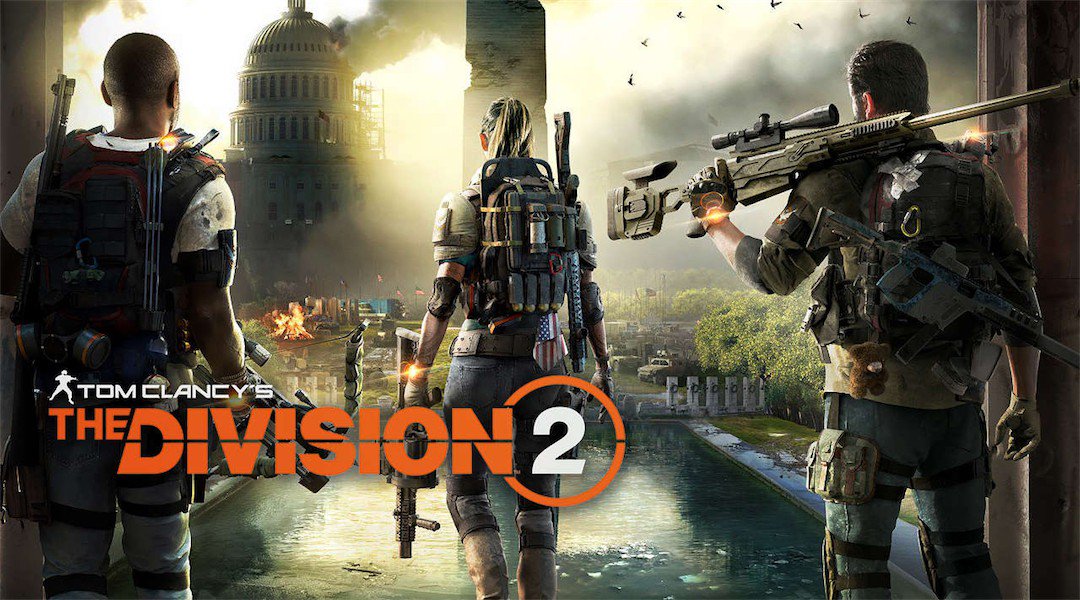
@assassinasan
The Division 2 is a looter-shooter that restores hope for those jaded by the recent influx of poorly launched live service titles. This newest Tom Clancy game offers an abundance of content, including side missions, control points, convoy escorting, random friendly NPC tasks, bounties, settlement projects, safe house activation, various collectables (e.g. audio tapes, SHD tech) and random side activities in the open world (e.g. disabling enemy radio, rescuing hostages). Every activity is generously sprinkled with loot, as playerd are rewarded for.. everything. Most Ubisoft open-world games suffer from an overwhelming amount of activities marked on a typically large map (cough, cough…Assassin’s Creed), but The Division 2 contains itself…
WASHINGTON CAPS
As a native born and raised New Yorker, there was skepticism in how more interesting an open world could be in Washington DC. I couldn’t imagine a better place to pop a bunch of goons than the benches of Times Square during a snowfall. TCTD2 proved me wrong, with great internal structures of the National Air and Space Museum and the National Museum of American History. Despite never having been to the Nation’s Capitol, the game threw me right in — as if I had free access to said museums — thanks to Ubisoft’s attention to detail and impressive graphics.
The most notable changes of scenary from the disheveled urban streets of DC? Facing off against the True Sons faction in the Vietnam section of the Museum of American History, or entering the Planetarium in the Air and Space Museum. So nice. Though there was a missed opportunity to include the Museum of Natural History or the Museum of Modern Art. Overall, every corner of the open world is full of finite details; rubber duckies can be seen floating in random puddles, post-it notes are almost legible, and a child’s drawings are subtly scribbled in chalk across some walls.
WASHINGTON BULLETS
Much like the original game, The Division 2 takes place after a smallpox pandemic that has caused chaos among survivors. While this setting does a lot for the gameplay, players still don’t know how we got there. The main story isn’t engaging but some of the audio tapes and echoes hidden around the world seem to tell more interesting mini stories. What lacks in story is supplemented with fun and addictive gameplay; the third-person gunplay and cover system has severely improved. Each gun feels unique and impactful. There is a large arsenal of different guns, each customizable with mods and color dye. The only downfall to mods is you need to manually remove it before deconstructing a weapon, or else the mod will also be deconstructed. Fortunately, the game warns you, but I wish the mod was stripped from the slot automatically.
Not only are weapons customizable, but gear and skills have mod options too. You can mix and match your build and test it out in the gun range at the Base of Operations. I love the ability to switch your skills and loadouts on the fly. The Division 2 absolutely improves character creation, too, (although not nearly as extensive as, say, Dragon Age: Inquisition). I really wanted my agent to be tanner, but the preset agent I chose limited how dark I could make her. There’s more of a variety to outfits than mere different colored parkas (I miss them though!) and an option to dye clothing, to boot.
WASHINGTON REDSKINS
Enemy factions run rampant in the streets of DC, and that’s key to what makes The Division 2’s combat addictive. Each faction has a variety of enemy types that approach the players in different ways. For example, The Outcasts have an enemy type that is sort of a “suicide bomber”, while the Hyenas have an enemy that inhales gas and goes into a frenzied state before sprinting toward you with a knife. Other enemies stay behind cover to deploy RC vehicles with explosives attached to them. The enemy AI is smarter than many shooters, as they move rapidly, dive behind cover, lay down on the ground to shoot, flank, and push in fast toward the player.
Each faction and varied enemy type make the combat more dynamic — a nice change of pace from the bullet-sponges in the original. That’s until you fight the bosses, who are essentially just armored versions of the regular enemies with specific weak points, and they have names. Once you finish the story and hit the level 30 cap, a new faction called The Black Tusks arrive; they wipe away all the control points you work hard for and create new objectives for mission replay.
WASHINGTON NATIONALS
As you’re progressing through the main story, the end game is in sight as Strongholds and Dark Zones (PvPVE) become visible on the map. There’s alsonthe option to progress three specializations: Survivalists, Sharpshooters and Demolitionists. Here you’re given progression tasks, new projects and side missions, daily and weekly assignments. You also unlock powerful signature weapons, and your items levels are replaced by a gear score, which is reminiscent of the “light level” in Destiny. The gear score caps at 450 and the World Tier progression ends at tier 4. To reach this you must first complete the invaded missions and then do Control Points, Strongholds, or Dark Zone.
The Dark Zone remains a unique blend of PVE and PVP where players fight tough enemy mobs and bosses for loot in contaminated zones. Rare and unique loot must be extracted for decontamination before it’s officially yours. This process is intended to create tension, as any agent you were fighting side-by-side with can go rogue on you and steal your loot. Agents go Rogue simply by shooting any non-rogue agent, with the Rogue agent then highlighted on the map for all players in that Dark Zone to hunt. Rogue agents can lock pick supplies, access SHD terminals, and steal gear. Once you go rogue many times, you’re initiated into an exclusive hideout for rogue agents called The Thieves Den, where an exclusive merchant is available.
WASHINGTON WIZARDS
There are three Dark Zones available on the map, which every agent enters on a level playing field via gear normalization. The DZ has its own progression system and you earn XP by killing enemies, going rogue, successfully extracting gear, killing rogue agents, finding collectibles, and discovering locations. If you want more of a challenge, you can enter Occupied Dark Zones at level 30 where gear normalization is turned off and AI become more aggressive. Like the original game, The Dark Zone remains a fun PVP experience that is like no other. Thus far, there are four strongholds, which are lengthy PvE encounters that seem to be just normal enemy types with more health. There aren’t any unique bosses or scenarios that require much strategic coordination that sets it apart from main and side missions.
The Division 2 has fun and addictive combat, detailed environments, interesting missions, lots of loot, and enough end game content to keep things live until the next update. It’ll be exciting to see what the Tidal Basin stronghold update and upcoming eight player raids have to offer. Ubisoft clearly took notes from the original game, absorbed player feedback, and implemented elements into the game that sets a new bar for live service looter shooters. Tom Clancy’s The Division 2 gives gamers hope that issues at launch can be kept at a minimum. 4.5/5 Bibles.
-Dee Assassina

